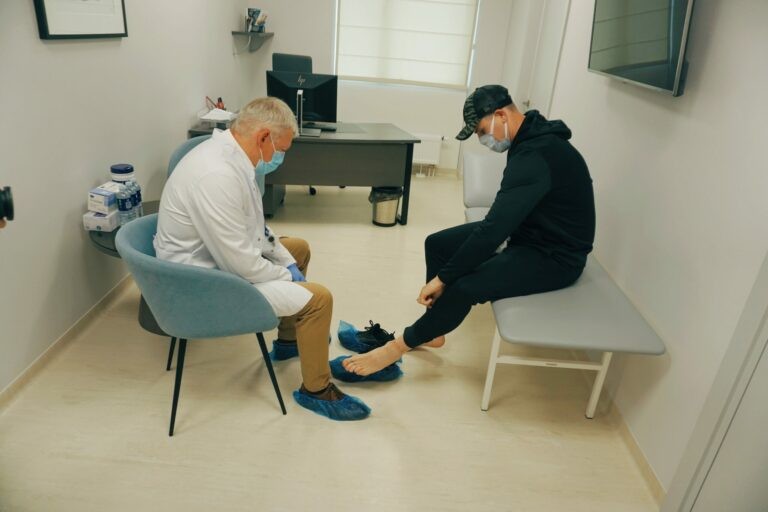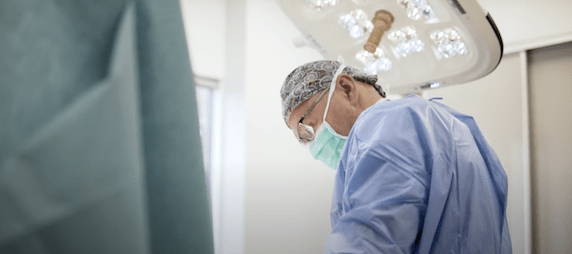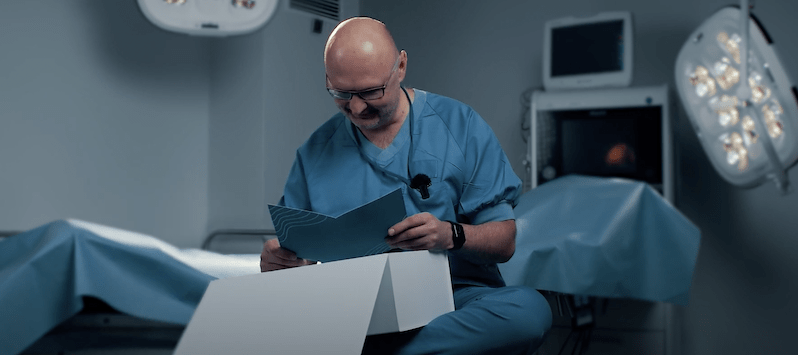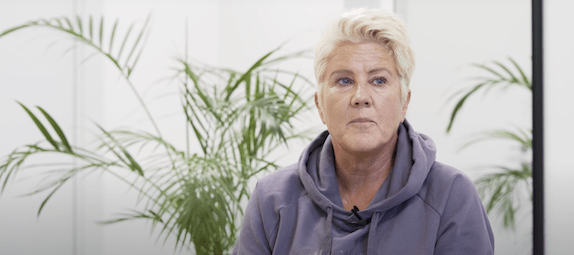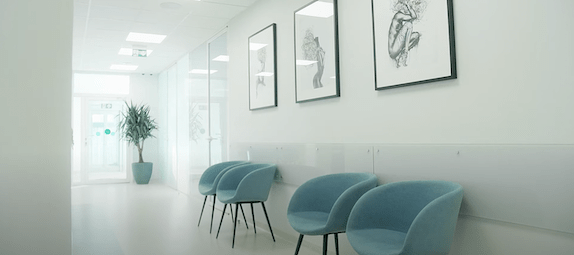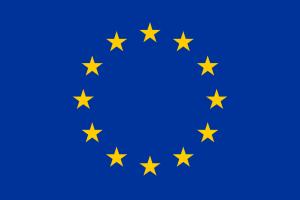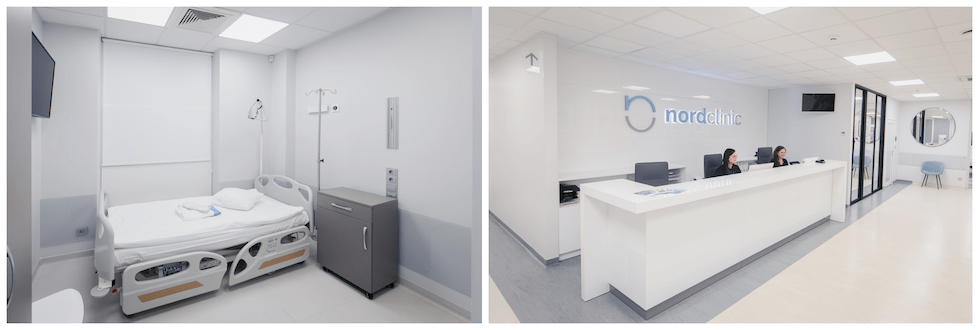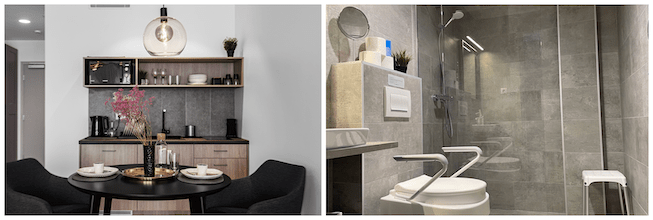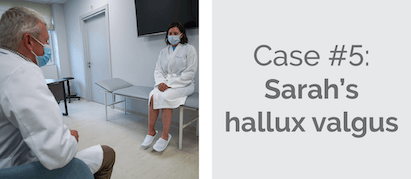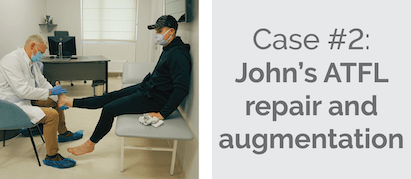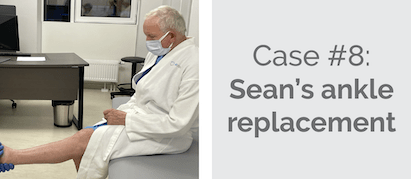Ankle Arthroscopy Abroad: Lithuania
We are one of the leading orthopaedic surgery clinics for medical tourists in the European Union. We are proud of the fact that over 90 % of our patients come from the UK, Ireland, Norway, Sweden, the United States, Canada and other countries.
Reviews & Facebook group
Our patients and clinic in the media
Prices
- ankle arthroscopy – from 1.875 £
- ankle instability (ankle ligament reconstruction) – from 2.340 £
- ankle impingement – from 1.950 £
- all necessary tests ( X-ray and MRI performed in 1 day) – 230 £
Tests required to confirm surgery, which can be done in our clinic within 1 day: ankle X-ray and MRI.
- accommodation with medical care – from 62 £ per night
- consultation with the surgeon
- necessary health tests
- surgery
- anaesthesia
- hospitalisation
- 24/7 personal assistance during your stay
- transfers to / from the airport, hotel and clinic
- all documents translated to English
Get your surgery for free by claiming a refund from your local health board. The clinic helps patients with the documents needed to claim a refund after following the EU directive route for medical treatment abroad. It applies to patients who are insured under the systems of one of the EU countries and may not get the surgery due to long waiting times.
- ankle arthroscopy – from 2.250 €
- ankle instability (lateral ankle ligament reconstruction) – from 2.800 €
- ankle impingement – from 2.250 €
- all necessary tests ( X-ray and MRI performed in 1 day) – 270 €
Tests required to confirm surgery, which can be done in our clinic within 1 day: ankle X-ray and MRI.
- accommodation with medical care – from 74 € per night
- consultation with the surgeon
- necessary health tests
- surgery
- anaesthesia
- hospitalisation
- 24/7 personal assistance during your stay
- transfers to / from the airport, hotel and clinic
- all documents translated to English
Get your surgery for free by claiming a refund from your local health board. The clinic helps patients with the documents needed to claim a refund after following the EU directive route for medical treatment abroad. It applies to patients who are insured under the systems of one of the EU countries and may not get the surgery due to long waiting times.
Ankle arthroscopy case analysis
Patient stories
Clinic videos
Nordorthopaedics Center Of Excellence
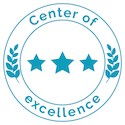
Experienced ankle and foot surgeon V. Kimtys
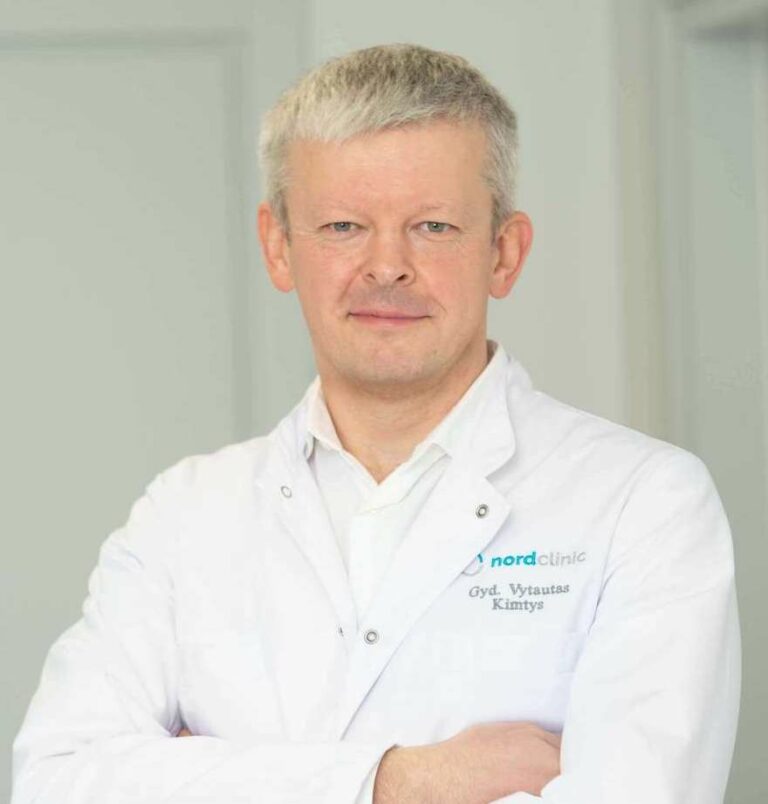
- More than 20 years of working experience
- 500 ankle prosthetics performed
- 1.000 ankle fusion surgeries
- Read more
Refund for EU patients
Get your surgery for free by claiming a refund from your local health board. The clinic helps patients with the documents needed to claim a refund after following the EU directive route for medical treatment abroad. It applies to patients who are insured under the systems of one of the EU countries and may not get the surgery due to long waiting times. On average our patients from the EU countries get fully refunded by their local health board in 5 months after their surgeries.
Our clinic
Self-catered accommodation with medical care
11 reasons that make us the most popular orthopaedic clinic abroad
One of the most important factors for a quick and full recovery after surgery is proper rehabilitation. Usually, clinics are not able to offer this due to costs savings. Our patients can choose between two inpatient and outpatient options: rehabilitation with a physiotherapist of the Lithuanian national basketball team, prof. L. Siupsinskas or rehabilitation at a medical SPA.
Our team of 5 orthopaedic surgeons has 10-20 years of experience in the field in total performing over 1.000 different orthopaedic surgeries per year. Moreover, our surgeons are members of various prestigious surgical societies both Lithuanian and international. Our leading joint replacement surgeon S. Tarasevicius is an author of 150 scientific publications in different medical journals, who has performed more than 3.500 joint replacement surgeries during 15+ years of his professional experience.
We are one of the leading orthopaedic surgery clinics for medical tourists in the European Union. We are proud of the fact that over 90 % of our patients come from the UK, Ireland, Norway, Sweden, the United States, Canada and other countries.
One of the world’s leading medical technology companies and orthopaedic implant manufacturers, Smith & Nephew, have chosen Nordorthopaedics as Center of Excellence in the Baltic States.
We are trusted by our patients and we appreciate all the reviews and feedback collected over the years. Find more than 150 testimonials here or on Google.
Already more than 4.000 of our former, current and future patients joined our online community with the aim to build a space for opinions and mutual support. Members are welcome to share experiences about their visit to the clinic and to discuss all surgery-related matters. No other orthopaedic clinic can offer such group support.
Being a true member of the International Society of Arthroplasty Registries, Lithuania is one of the leaders in low joint replacement revision rates, as only 9% of surgeries in Lithuania require revision in 10 years after surgery. Moreover, with the implants used at our clinic, only 2-3% of surgeries require revision in 10 years after surgery, while revision rates in some other Western countries, for example, USA, is as high as 17% in 10 years after surgery. The implants used at our clinic have been evaluated by other countries’ registries as those ensuring longest implant life, as compared to products of other manufacturers. Moreover, thanks to our active participation in collecting data for the registries, the surgical technique used at our clinic ensures best surgical outcomes.
Our clinic is seen on different media mentions like: BBC News, BBC Radio, The Telegraph, MailOnline, Winnipeg Free Press, CTV News, CBC, RTE Radio, itv.
Our clinic works according to the highest standards set by the European Union. This helps to guarantee the quality of medical services. We care about the safety, comfort and successful results of our patients from all over the world.
The clinic helps patients with the documents needed to claim a refund after following the EU directive route for medical treatment abroad. It applies to patients who are insured under the systems of one of the EU countries and may not get the surgery due to long waiting times.
We provide customer service in 9 foreign languages including English, Swedish, Norwegian, Danish, Italian, Spanish, French, Russian, Polish. Everyone in our clinic speaks English, including nurses, assistants and the surgeon.
Athletes treated at Nordorthopaedics
Official clinic of Lithuania national football teams

Highest quality implants
Our clinic uses implants based on their performance in international registries.
Being a true member of the International Society of Arthroplasty Registries, Lithuania is one of the leaders in low joint replacement revision rates, as only 9% of surgeries in Lithuania require revision in 10 years after surgery. Moreover, with the implants used at our clinic, only 2-3% of surgeries require revision in 10 years after surgery, while revision rates in some other Western countries, for example, USA, is as high as 17% in 10 years after surgery. The implants used at our clinic have been evaluated by other countries’ registries as those ensuring longest implant life, as compared to products of other manufacturers. Read more here.
13 patients' case studies
What is ankle arthroscopy and what conditions does it treat?
Ankle arthroscopy is a minimally invasive joint surgery that is designed to treat ankle pain and improve overall joint function. It is performed through small key-hole size incisions with a special miniature camera (an arthroscope) that visualizes cartilages, ligaments, and bones, inside the joint. An arthroscopic approach is used to diagnose and treat several joint problems:
Ankle arthritis is an inflammatory joint disease that includes more than 200 other joint disorders. It presents with swelling, warmth, decreased range of motion, and pain.
Ankle instability is treated by tightening the loose ligaments which ensure correct bone alignment and foot positioning.
Anterior ankle impingement, commonly known as an athlete’s ankle or footballer’s ankle, is compression of soft tissues. This condition can be treated surgically by removing the bone spurs or tissue that is causing the blockage.
Synovitis (inflammation of the synovial membrane) can be treated by removing the damaged membranous part of the joint capsule.
Loose bodies (free-floating parts of cartilage, bone, or soft tissue) are arthroscopically removed from the joint space.
Posterior ankle impingement (os trigonum syndrome), flexor hallucis longus tendinitis is treated performing posterior hindfoot endoscopy and removing prominent posterior talar process or os trigonum which can cause posterior ankle impingement and pain, flexor hallucis longus tendon is debrided and tendon retinaculum is released.
Ankle arthroscopy advantages and possible disadvantages
There are many advantages to ankle arthroscopy:
- Firstly, ankle arthroscopy is performed through tiny incisions, so the surgery is faster and less complicated.
- There is minimal scarring, thus, a patient experiences less pain and easier post-operative care.
- If compared to open ankle surgery, ankle arthroscopy has a lower complication risk and relatively shorter recovery.
- The patient can expect to return to professional sports as soon as 4-6 weeks post-surgery.
Preparing for arthroscopic ankle surgery
A prospective patient should contact the clinic to schedule the first appointment. During the first consultation, the patient should be prepared to discuss their medical history, allergies, and medication that they are taking at the time. The first appointment is for deciding on the treatment plan and evaluating the patient’s general health status.
It is strongly recommended to cease smoking and alcohol consumption at least 4 weeks before surgery. Tobacco use increases blood clotting and makes blood flow worse, thus, increasing the complication risk.
We recommend that patients make a list of all the medications they are currently taking so that it can be discussed with the consulting doctor. Some medication, such as Aspirin, Ibuprofen, Caumadin, naproxen have to be avoided due to their blood-thinning properties. Certain herbal teas, garlic, and fish oil should also be taken only with the doctor’s consent.
Patients must follow a healthy diet rich with all the vitamins and minerals. Vitamins (A, D, and C,) and minerals (zinc, calcium, and iron) are responsible for proper immune functioning and bone formation.
Once the surgery date is set, it is time to prepare for the post-operative recovery period. The first few weeks after surgery is mainly for resting at home. Thus, it is necessary to rearrange furniture and stock up on easy-to-cook foods.
On the day of surgery, patients should arrive wearing loose-fitting clothes, so that it is easy to fit them over an ankle cast, if it is required. It is best for the patient to not wear any nail polish or make-up and leave valuable jewelry at home. The patients should refrain from eating and drinking anything 8 hours before surgery.
How is ankle arthroscopy performed?
Before the surgery, the patients have to undergo certain lab tests, including a complete blood count and electrocardiogram (ECG). Ankle arthroscopy is performed under general aneasthesia, so a patient is fully asleep and does not feel anything during the surgery.
Firstly, a surgeon makes a few 1 centimeter size incisions to gain access to the ankle joint. The surgeon inserts a special camera, called an arthroscope. This miniature device is only 0.5 centimeter in diameter, allowing the surgeon to thoroughly inspect and treat the damaged joint. The exact alterations performed on the joint are individual and depend on the existing joint problems. At the end of the surgery, the incisions are closed and covered with a bandage. In some cases, the ankle is put in a plaster cast.
Ankle arthroscopy takes approximately 30-90 minutes and requires an overnight stay at the clinic.
FAQ about ankle arthroscopy with our surgeon
Recovery after ankle arthroscopy
After surgery, the patients wake up in a recovery room. Feeling tired and dizzy is completely normal and should be expected. The operated leg is put in a brace and kept elevated to prevent it from swelling. For the first few hours, the pain is managed with intravenous medications. Normally, most patients can get up and walk with crutches on the same day. Before being discharged from the clinic, the patients are prescribed painkillers and given information on post-surgical wound care. Sutures are usually removed within 2 weeks after the surgery.
When at home, we recommend patients rest properly and keep the operated leg elevated for as long as possible. One may consider purchasing a foam ramp to keep the leg elevated at night. Many patients can expect to return to work within 1-2 weeks post-op unless otherwise advised by the doctor. It may take at least 4-6 weeks of recovery before one can return to sports, driving, and other strenuous activities.
Post-surgical wound care
Taking proper care of the incision sites helps with healing, lowers infection risk, and prevents scarring. Any cut to the skin is an easy access for the germs to enter the body and cause an infection. To prevent the surgical site from getting infected: one should:
- One should wash the hands with soap or use alcohol-based sanitizers before and after touching the operated area;
- The bandage should be kept clean and dry for the first 24 hours.
- After 5-7 days a patient can shower and gently wash the wound with soap and water without soaking it for too long.
- The dressing has to be changed every day and when it gets wet or dirty.
- Bear in mind that if the wounds are sutured with non-dissolvable stitches one should not try to take them out, and instead, wait for the doctor to take the stitches out properly.
Physical therapy and returning to sports
Each rehabilitation week has different goals and challenges. Steadily progressing through recovery stages eventually leads to a successful return to everyday activities and professional sports.
Week 1. The first-week post-op involves a lot of rest. The operated leg should be slightly elevated to prevent it from becoming sore and swollen. It is normal to experience mild bruising and moderate pain. Over-the-counter medications, like naproxen or ibuprofen, help to manage the pain. If the surgery was done on the left ankle, a patient can expect to begin driving after the first week
Week 2-3. After 2 weeks post-surgery, patients have a follow-up appointment, during which a healthcare provider checks the operated ankle and, if needed, removes the stitches. The patients are also instructed on rehabilitation exercises which include rotation of the foot (‘drawing’ circles), moving the foot up and down, bringing the knees to the chest, and soft stretching. The exercise routine is to be done three times a day to prevent stiffness of the ankle. The patients can begin walking short distances, but the ankle should still be kept elevated for as long as possible. Some may be able to begin working from home. However, returning to manual and lengthy standing jobs should be postponed for at least 4 weeks.
Week 4. A patient should continue to move regularly and increase the exercising frequency to 6 times a day. Provided that the wounds are completely healed, the patient can progress to exercising in a pool or bike riding.
The ankle can remain slightly swollen for a long as 3 months post-surgery. Returning to professional sports requires gradually increasing activity levels and training difficulty. The time it takes to recover completely is different for every patient.
Send us your enquiry






